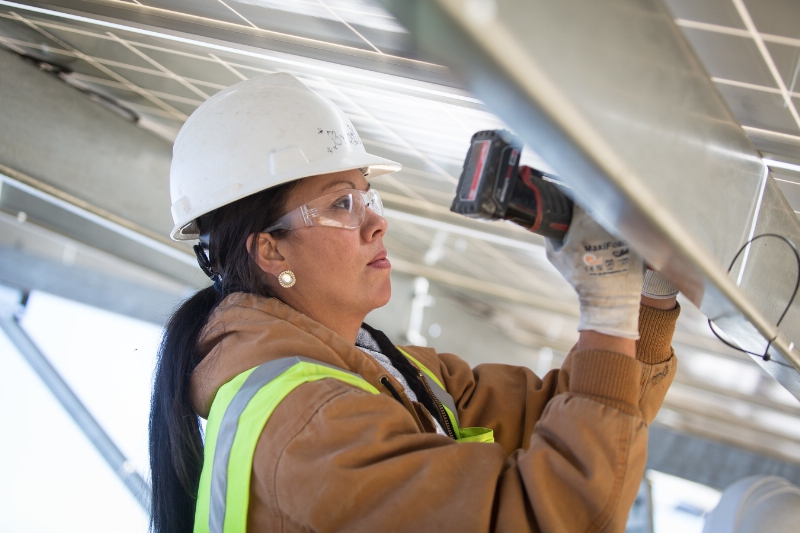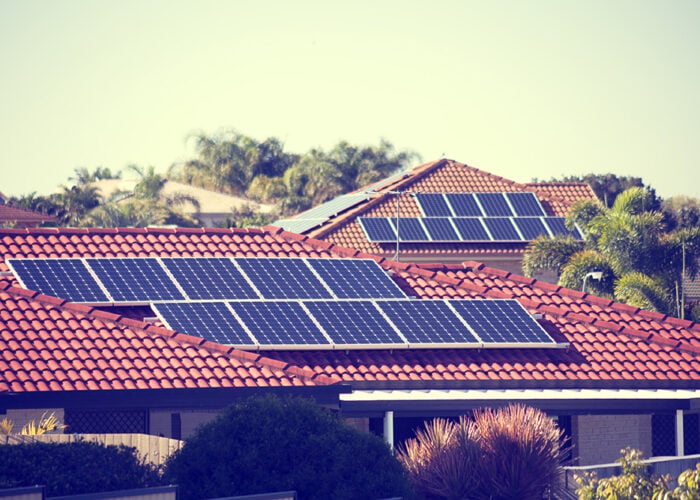
The US solar industry added 17,212 jobs in 2021, up 5.4% on 2020 figures, with 40% of all US energy jobs now focused on the transition to a net zero economy, according to the Department of Energy’s (DOE) US Energy and Employment Report (USEER).
Despite economic uncertainty following the pandemic, the US energy sector experienced positive job growth in 2021, increasing 4.0% from 2020 levels and outpacing overall US employment, which climbed 2.8% in the same period.
Unlock unlimited access for 12 whole months of distinctive global analysis
Photovoltaics International is now included.
- Regular insight and analysis of the industry’s biggest developments
- In-depth interviews with the industry’s leading figures
- Unlimited digital access to the PV Tech Power journal catalogue
- Unlimited digital access to the Photovoltaics International journal catalogue
- Access to more than 1,000 technical papers
- Discounts on Solar Media’s portfolio of events, in-person and virtual
Overall, the total number of energy jobs increased from 7.5 million in 2020 to more than 7.8 million in 2021, with more than three million of these focused on the energy transition, the report showed.
Last year’s report found that although the US energy sector had been one of the country’s fastest-growing job markets before the COVID-19 pandemic, it fell to 7.5 million jobs by the end of 2020, a decrease of 840,000 positions or a 10% decline year-over-year, meaning there are still fewer US energy jobs than before the pandemic.
“Amidst the unique challenges of a nation coming out of a global pandemic, America’s energy sector stands out with considerable job growth across nearly all industries,” said US Secretary of Energy Jennifer Granholm.
“DOE’s USEER report shows that jobs critical to our clean energy transition are on the rise and poised for continued expansion thanks to the historic investments from the President’s Bipartisan Infrastructure Law.”
Jobs in the US transmission, distribution, and storage sector increased by 1.9% (22,779 new jobs) despite an acute and mounting focus on the US’ grid congestion problems that have seen thousands of gigawatts of renewable energy stuck in interconnection queues.
The US clean transport sector recorded impressive job growth figures. Electric vehicle jobs increased by 26.2%, adding 21,961 new jobs, while hybrid electric vehicle jobs increased 19.7% (23,577 new jobs).
Moreover, the amount of jobs in polluting energy industries declined. Jobs in the petroleum industry declined by 31,593 (a 6.4% drop), while coal fuel jobs fell by an even greater percentage as the industry shed 7,125 jobs, representing a 11.8% decline. Jobs in coal power generation fell by a smaller amount – 572 jobs, a decline of just 0.8%. Nuclear power jobs also declined by 2,440 in 2021, a drop of 4.2%.
At the state level, Michigan, California and Texas registered the highest energy job growth across the country, with a particular focus on low or zero-carbon transport, while West Virginia and Pennsylvania added the most jobs in transmission, distribution and storage, gaining 7,321 and 5,726 new jobs, respectively.
The report also revealed that 10% of workers in the energy sector are represented by a union or covered by project labour agreements, compared to just 6% in US the private sector.
“As a nation, it is crucial that we do all that we can to ensure that the growth of these sectors continues and that the jobs created are good, union jobs,” said Jason Walsh, executive director of BlueGreen Alliance Executive, which seeks to connect labour unions and environmental organisations.
When it comes to demographics, men made up 74% of the US energy workforce (compared with the national average of 53%), while non-white workers were overrepresented in the US energy sector (26%) compared with the national average (22%). Black or African American workers represented 8% of the energy workforce, compared with 12% nationally.
That said, demographic data should be met with caution as the DOE said “surveys were filled out by employers who do not always have an accurate understanding of the racial and ethnic makeup of their employees”.
The 2022 USEER is based on surveys of approximately 33,000 private energy businesses combined with public labour data to produce estimates of employment and workforce characteristics.







